Duck breast with roasted figs
Figs are again in full season. They come in many varieties and colors ranging from pale yellow to green and purple. I love the sweet purple figs. Their sweetness and flavor are even more intense when roasted. In this blog, I make a wonderful dish of juicy duck breast with figs full of flavor. Delicious!
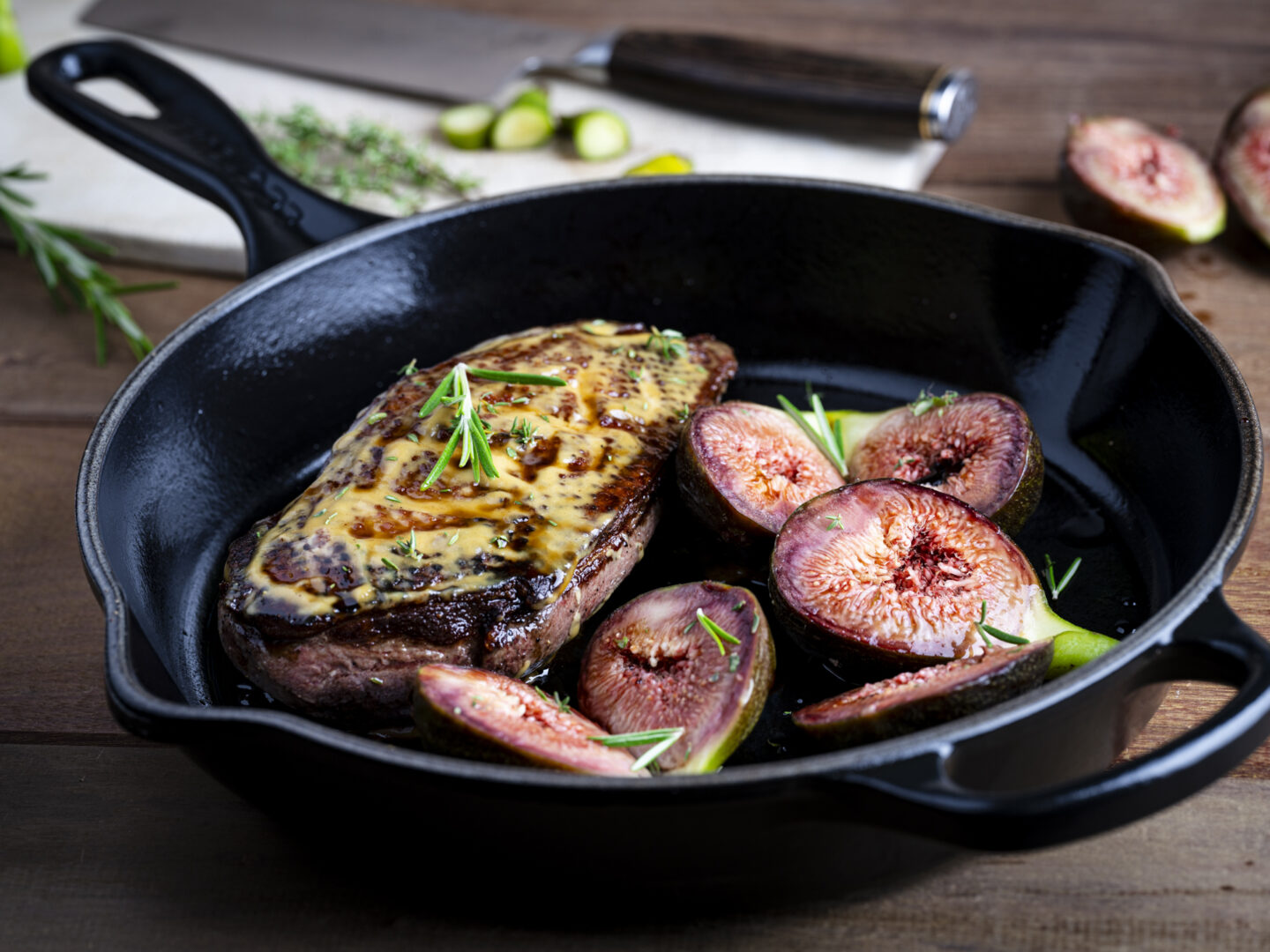
Where do figs come from?
Figs originated in Western Asia, particularly in the region from Turkey to northern India. The Ancient Greeks and Romans brought them to the Mediterranean region and the Spanish missionaries took figs to the Americas. From Western Asia figs found their way as far as China.
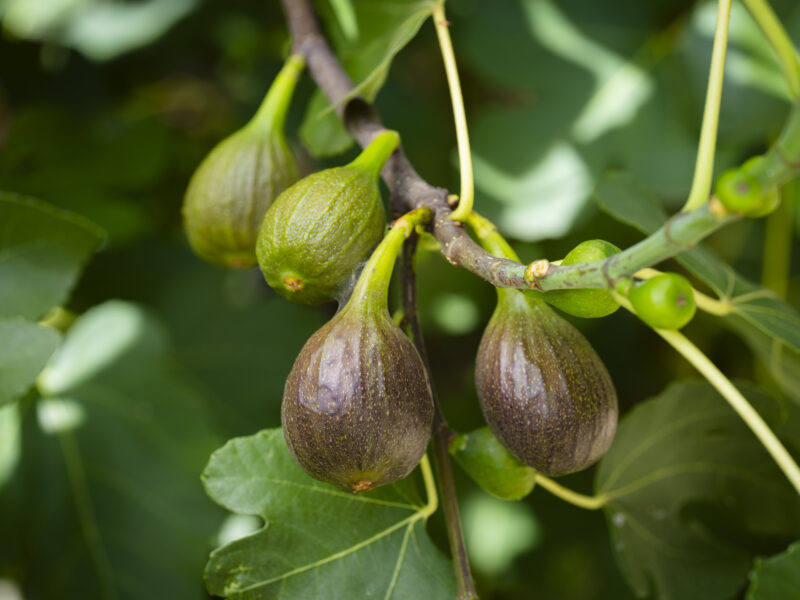
Figs in your own garden
As climate changes, it is now possible to grow a fig tree even in Belgium. I have had a fig tree of the Brown Turkey variety in my garden for years. At the end of each summer, the tree is loaded with beautiful purple fruits.
Sunny and dry
A fig tree does not like to be cold or have wet feet. So, plant your tree in fertile soil, in a sheltered, sunny spot with good drainage. If you have a wall facing south, then you've found the ideal spot. A fig tree needs to be sheltered from the wind and winter cold. A wall also further retains heat, and the ripening figs benefit from that. Keep in mind that ripe figs attract bees in the summer.
Pruning the fig tree
The fig tree is dormant from November to February, the ideal time to prune the tree. Cut branches away to about halfway down their length. A fig tree grows quickly, so you can also prune away unruly branches during the summer. In the cold winter of 2009, my fig tree froze completely. I pruned the tree down to the base of the trunk. I thought it was a lost cause, but a few years later I had plenty of figs again.
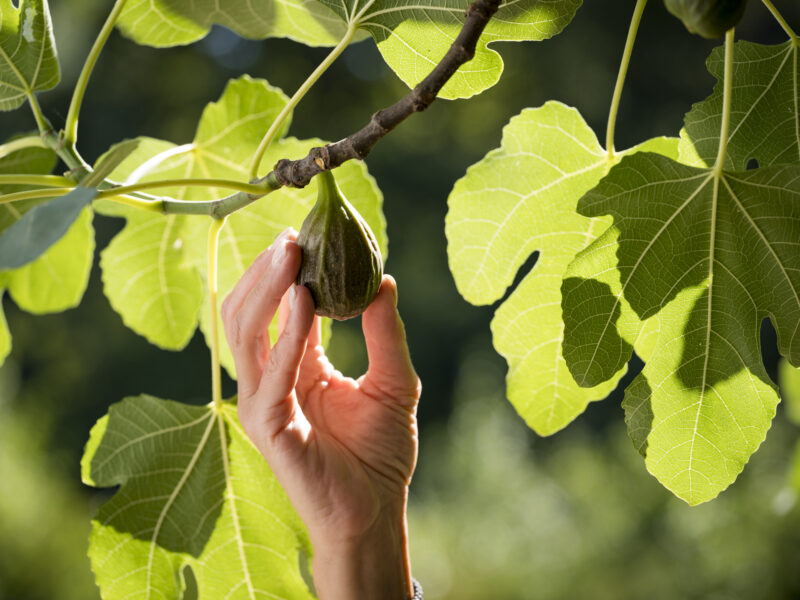
Figs are healthy
Figs are not only delicious because of their sweet taste; they are also very healthy. Figs contain vitamins A, B, C and K as well as many minerals including potassium and calcium. All these elements help to strengthen the body's immune system and have a positive effect on cardiovascular disease, osteoporosis and diabetes. Figs also help soothe sore throats. Furthermore, figs contain a lot of dietary fiber that helps with proper digestion. All reasons to fully enjoy figs now that they are in season.
How do you eat figs?
When you eat a fig, first of all, make sure it is perfectly ripe. Only then does the fruit develop the deliciously sweet flavor for which it is so loved. You can eat a fig either cold or hot, in savory or sweet dishes. I prefer above all a fig freshly picked, straight from the tree.
You can eat the whole fig: the flesh, the small seeds and the skin. If you prefer to eat them without the skin, then simply remove it with a paring knife. Cut the top of the fig and pull strips of the skin with the tip of your knife in a downward movement, from the top to the base.
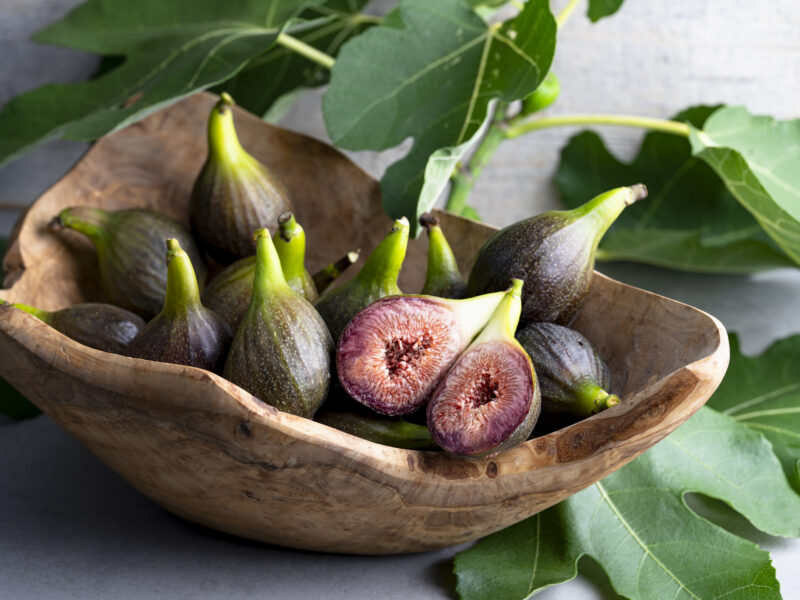
Preserving figs
Figs are very delicate and don’t keep well. Handle them with care and avoid bruising them. If you do want to store them for a few days, put them in a closed container in the refrigerator for a maximum of 3 days.
Figs: versatile and delicious
I already mentioned that figs are a versatile fruit. You can eat them hot or cold, in savory or sweet dishes. Try serving fresh figs with mozzarella, goat cheese, feta or blue cheese. Figs taste delicious served with dried ham and in a salad with grains and nuts. Finish the salad with a touch of balsamic vinegar and olive oil. Turn your bountiful harvest into fig jam and serve that with Greek yogurt and some honey. For dessert, a fig crumble is a real treat. I often roast figs in the oven. I serve the warm fruit as a side dish with lamb, stuffed quail or, for a vegetarian dish, with roasted halloumi.
Do you feel like cooking? Here is my recipe for duck breast with figs.
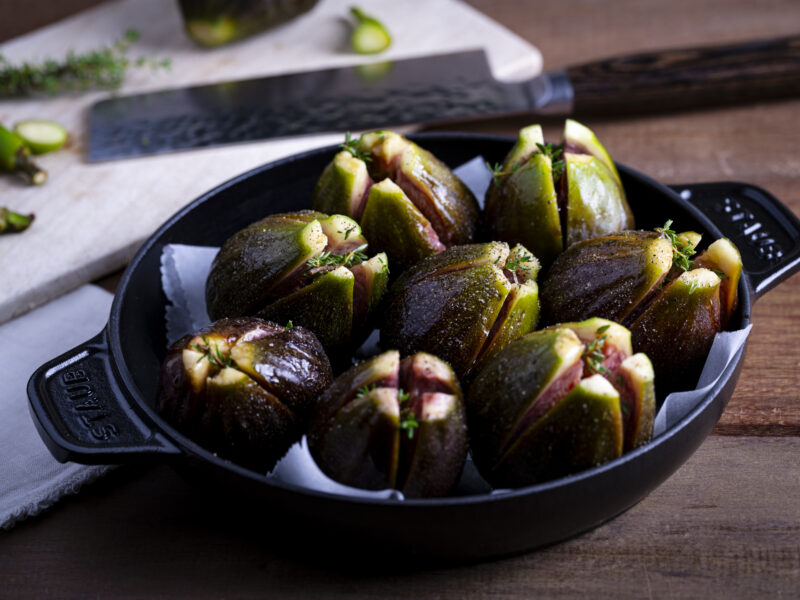
Recipe: duck breast with figs
In this recipe, I prepare savory roasted figs. You can also make a sweet version of this. Replace the fresh herbs, olive oil and balsamic vinegar with cinnamon, butter and honey. Leave out the salt and pepper. For a mouth-watering dessert, serve a generous scoop of vanilla ice cream with the warm figs and sprinkle with toasted hazelnuts.
* To prepare the duck breasts, I use Dijon mustard with honey and rosemary from Maille. You can also use classic Dijon mustard or honey mustard.
This recipe serves 4 people. You will need an ovenproof dish and a baking sheet. The dish should be large enough to hold both the figs and the duck breasts.
Preheat the oven to 180°C.
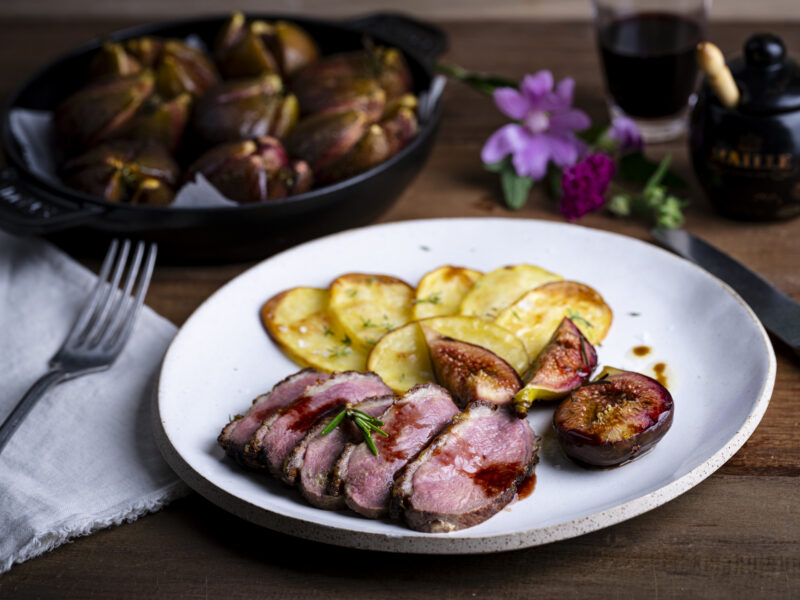
Ingredients:
For the figs:
- 8 figs
- 8 small sprigs thyme
- 2 sprigs rosemary
- 3 tablespoons olive oil
- 3 tablespoons balsamic vinegar
- Freshly ground pepper and sea salt
For the duck breasts:
- 2 duck breasts, 400 g each
- 2 tablespoons Dijon mustard with honey and rosemary*
- 2 tablespoons balsamic vinegar
- 2 sprigs thyme
- 1 sprig rosemary
- Freshly ground pepper and sea salt
For the potatoes:
- 4 large, firm potatoes
- 1 to 2 tablespoons clarified butter
- Sea salt
-
Preparing the figs
Cut the figs vertically to halfway. Give the figs a half-turn and repeat the operation so that they are cut halfway in a cross shape. Now gently pull the figs open. Pluck the thyme and rosemary leaves from the sprigs and sprinkle them inside the figs. Season with salt and pepper. Line the baking dish with baking paper and place the figs in the dish. Pour the olive oil and balsamic vinegar over the figs. Set the dish aside and prepare the potatoes.
-
Preparing the potatoes
Bring a bowl of salted water to a boil. Meanwhile, peel the potatoes and use a mandolin to cut them horizontally into slices of about 2 mm thick. Cook the potatoes in the water for 5 minutes, remove them with a slotted spoon and transfer them to a wire rack. Pat the slices dry with some paper towel.
Brush the baking sheet with clarified butter. Spread the potato slices on the baking sheet and brush the rest of the clarified butter on top. Set the dish aside.
-
Preparing the duck breasts
Make diagonal cuts in the skin of the duck breasts, without cutting all the way through to the meat. Make incisions in a diamond pattern. Season the duck breasts with salt and pepper.
-
The oven is ready
Place the dish with the figs and the baking sheet with the potatoes in the oven. Both preparations take about 20 minutes to roast.
Meanwhile, heat an ungreased pan and place the duck breasts in the pan, fat side down. Brown the skin and continue frying for about 3 minutes. Then flip the duck breasts over and continue frying for about 3 more minutes.
Remove the duck breasts from the pan and brush both sides with mustard. Remove the dish with the figs from the oven and place the duck breasts with the skin side up. Sprinkle the thyme and rosemary leaves over the duck. Top the duck breasts with balsamic vinegar. Place the dish back in the oven for the remaining 10 minutes.
-
Ready to serve
Take the dish with the figs and duck breasts out of the oven. Remove the duck breasts, cover and let them rest for a few minutes. Put the figs back in the oven sto keep them warm. The fig juice will have mixed with the olive oil and balsamic vinegar during the roasting process to form a dark gravy.
The potatoes should be done by now and the slices should have a crispy brown edge. Sprinkle them with a little fleur de sel.
Thinly slice the duck breasts and place them on the plates. Arrange the potato slices and figs on top. Pour the gravy from the casserole into a small jug and serve with the dish.